Talmud Education for Diverse Learners: Taking the “Long but Short” Road

Sarah Gordon is the Senior Director of Israel Education – AMER for Unpacked for Educators, a division of OpenDor Media. She previously spent over a decade teaching Talmud and serving as the Director of Israel Guidance and Experiential Education at Ma’ayanot Yeshiva High School.
Teaching Talmud to weaker students can present many challenges not typically found in traditional Gemara classes. Navigating a text in a foreign language, especially one with the unique structure and rules of the Talmud, can be daunting for those grappling with language-based difficulties. Educators must realistically decide which teaching method—skill-based or discussion-based—will best set diverse learners up for success, and how demanding a Talmud course should be for students not likely to pursue this type of Torah learning in the future. Additionally, for students who already struggle in school, how can we ensure that learning Talmud will not inadvertently contribute to their sense of failure, subsequently harming their religious identities?
While teaching such students has its challenges, it also offers fantastic opportunities. It allows students who often do not view school as a place of success to discover connection and meaning in this area of Torah. Many of these students, though they may face difficulties with formal tests and language, can be deeply inquisitive and enthusiastic when they realize how the Talmud resonates with the values and debates they care about.
It is precisely these opportunities that have shaped my perspective over the years. Drawing from many years teaching Talmud to students with learning difficulties, I am firmly convinced that all Jewish day school students, irrespective of academic level, should be exposed to learning Talmud. Talmud is a crucial part of the Jewish tradition and all students should have access to it, though that presentation can and should be adjusted to each student’s abilities. Ultimately, to uphold the principle of “teaching a child according to their way” (Proverbs 22:6), a paradigm shift in Talmud education is required to ensure the success of both students and educators.
I would like to suggest five changes that schools can implement to improve the success of weaker students in Talmud classes.
- Clarity of goals: Frequently, when teaching Talmud to weaker tracks, it is unclear if the focus of these classes is building formal skills or facilitating discussions and imparting values. The lack of clarity surrounding these expectations often results in frustration on behalf of the educator. Is this a skills-based introduction to Talmud class, with the goal of preparing students to move onto a classically styled Gemara class or is the focus on specific content and ideas? Both options are possible, but each requires a distinct approach to cater to students with learning difficulties. One method emphasizes memorizing words and recognizing patterns and structure in the Gemara, while the other focuses more on discussion, extracting values and ideas out of the text. Educators need clear direction on which goal to prioritize, enabling them to adapt the curriculum to the needs of their students.
- Time for reflection: Incorporating time for student reflection about Talmud learning is crucial. Students should actively address the question of whether every Jewish student should be studying Gemara and discuss why this course is deemed important enough to be a requisite part of their studies. Allocating class time to contemplate the significance of Talmud and its place within the tradition can help students view it as a key element of their Jewish heritage. Educators can share personal reflections on why Gemara is meaningful to them and invite their own teachers and rabbis to participate in similar discussions with their students. Creating these opportunities for reflection is especially important for students who find the texts so hard to understand that they struggle to see their value. As educators, we should strive to ensure that all of our students, regardless of skill level, feel that Talmud is an integral part of their world.
- Celebrate small victories: Find opportunities to celebrate students’ successes, no matter how small. This could include a student improving their score on a word quiz, asking a great question, or excitedly drawing a connection between something they learned in another class (or even a TV show) to what they are learning in Gemara class. Send a note home and express to the student how proud you are of them. These moments of celebration can also be done as a class, through organizing a siyum (celebratory party or meal at the conclusion of a section of learning) when students have completed a certain amount of Talmudic text. Recognizing and celebrating student achievements teaches that difficult moments can be overcome and that success takes time. Additionally, I would encourage educators to share with their students their own struggles with learning which was difficult or anecdotes of when they overcame failure, modeling empathy and understanding for their students.
- Set educators up for success: Most Talmud educators do not have background or experience working with students with specific learning difficulties. Teaching these courses requires additional preparation in order to differentiate between students and ensure that all individual learning plans are met. Additionally, creative assignments and projects, which can be successful engaging unmotivated students, often do not work for students who struggle with abstract reasoning and lack the attention span for group work, creating additional challenges for educators. Schools need to provide real support for educators, beyond referring them to the learning center. As much as learning specialists can serve as resources for educators, having to spend additional time outside of the classroom revamping their curriculum is not a sustainable option for overworked teachers. Schools need to be prepared to invest in those who teach their weaker students, perhaps by assigning a learning specialist to each class to work in tandem with the teacher, or compensating teachers for the extra preparation time. Perhaps, schools can partner with Jewish Education graduate schools to create opportunities for teachers to specialize in teaching Judaic studies while also receiving training in special education skills.
- Reduce the pressure: When possible, reduce the pressure on the students and let the learning focus on building relationships and associating a positive environment with Talmud study. Especially for students who often struggle in school and have test anxiety, we should make sure that Talmud does not become another area in which they feel inadequate. I would recommend replacing tests with alternate assessments or allowing the students to have access to their notes during exams, while maintaining accountability for the course in other ways. Teachers can also consider shifting the goal of these classes from mastery of skills to focusing on values and content. This presents a valuable opportunity to introduce our students to the rich world of agadic Talmudic texts, exploring their narratives, lessons, and debates as an alternative to the traditional Gemara sections typically studied.
Additionally, even within the traditionally studied Gemara sections, teachers can opt to focus on debates that resonate with students’ own experiences. For instance, when teaching the opening mishnah in Berakhot, educators can relate the concept of setting earlier deadlines for prayer to the question of whether students have ever set earlier deadlines for themselves to avoid missing something crucial. This is particularly relatable for students who grapple with attention challenges.
Each school’s approach to implementing these changes will differ, considering the unique needs, available financial resources, and culture of each institution. I hope this article inspires more essential conversations between administrators and educators, ensuring that administrators set clear class expectations and teachers articulate what they require for success. Such collaboration will address and prevent the prevalent diffusion of responsibility, paving the way for the success of both students and educators.
To conclude, I’m reminded of a powerful story found in the Babylonian Talmud (Eruvin 53b). R. Yehoshua ben Hananyah was traveling down a road and asked directions from a young boy. He was presented with two choices: a path that was “short but long” and another that was “long but short.” R. Yehoshua ben Hananyah opted for what he believed to be the shorter road, only to discover it riddled with many obstacles. Ultimately, the “longer but shorter” road would have been a more direct route. This narrative serves as an apt metaphor for adapting our approach to teaching Talmud to weaker classes. We can employ what seem to be the easier, shorter roads, yet find ourselves eventually overwhelmed by challenges. Reevaluating our traditional methods and opting for the “long but short” approach will ultimately be the more successful way to reach our goals.



Sarah Gordon is the Senior Director of Israel Education – AMER for Unpacked for Educators, a division of OpenDor Media. She previously spent over a decade teaching Talmud and serving as the Director of Israel Guidance and Experiential Education at Ma’ayanot Yeshiva High School.
Reach 10,000 Jewish educational professionals. Advertise in the upcoming issue of Jewish Educational Leadership.
Do you want to write for Jewish Educational Leadership? See the Call for Papers for the upcoming issue.


FROM THE EDITOR: Fall 2023
Fascinating. Infuriating. Uplifting. Complex. Boring. Inconsistent. Logical. Brilliant. Eclectic. Irrelevant. Compelling. Frustrating. Inspiring. Ancient. Contemporary. The Talmud evokes all the above, and more. I vividly remember my first encounter with Gemara. I must have been ten years old, and my family was in a bungalow colony in the Catskills. Rabbi Cohen taught Gemara to the older boys, of which I was not, but I asked permission to sit in and listen. I loved following the discussions and debates, even though I couldn’t read any of it and retained none of the content.


The Block Method for Teaching Gemara
By its very nature, teaching Gemara seems to defy everything we know about education. When we teach math, or language, or anything else, we start with the simple and easy-to-grasp aspects of the study area and gradually increase the level of challenge and difficulty. For example, we begin with addition and slowly move on to subtraction, multiplication, and division. We certainly don’t touch algebra until these are firmly in place. One couldn’t imagine a math class that requires knowledge of Pythagoras’ theorem presented to a class that has not yet mastered multiplication.


The Puzzling Talmud
A sixteen-year-old American Jewish day school student named Brandon (a self-chosen pseudonym) reports that he likes studying Talmud. What does he like about it? “I like the process,” he says. “It is kinda like a puzzle, that you have to get each word, and fill it in so it creates the whole text.” Brandon approaches his study of Talmud knowing that it’s going to be hard. Every word might take some effort to decode. Eventually, however, he can put it all together.
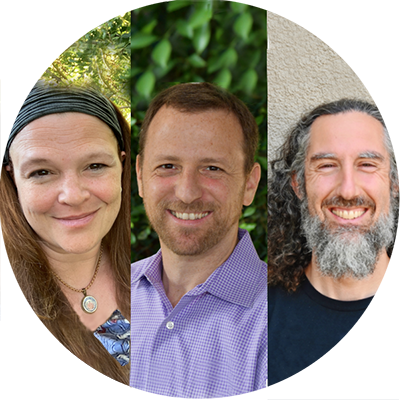

A Multidimensional Approach to Teaching Rabbinics
Pressman Academy is an early childhood through 8th grade school in Los Angeles serving a religiously diverse group of students. The school’s Judaics program, which includes Hebrew language, Jewish history, Tanakh, and daily prayer, affords a maximum of two weekly periods to teaching Rabbinics (in grades 5-8), presenting a significant challenge of what to include and how to approach it.


The Sanhedrin is in Session: Experiencing Rabbinic Literature
On Tuesday morning Rabban Gamliel called the gathered people to order. A letter had arrived from a northern district court in the Galilee which required the attention of the Sanhedrin. Rabban Gamliel took his seat at the head of the semi-circle of esteemed Rabbinic colleagues. R. Yehoshua sat on one side of him and R. Eliezer sat on the other.
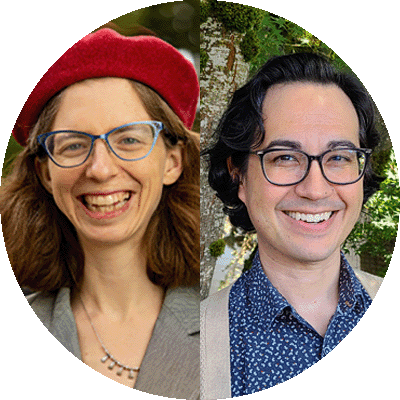

Replacing Relevance with Relationship
A relationship to Talmud study is highly valuable to those who possess it. Few other activities manage to combine elements of intellectual inquiry, spiritual questing, and moral development in the almost alchemical way that the study of Talmud does. And yet, there are a number of hurdles students must overcome in order to develop an independent relationship with the Talmud. First and foremost, studying Talmud in the original Hebrew and Aramaic can feel scary to the uninitiated. Second, the logic of the Talmud is foreign to students at first. Finally, students may wonder what a text from 1500 years ago might have to say to them.


Teaching Talmud in Secondary Schools: Masorah and Modernity
Teaching of Talmud in traditional secondary schools has been a conundrum from the day it was decided to teach Talmud as part of the standard Jewish studies curriculum. Programs for yeshiva high school graduates in Israel and around the world are consistently populated by an overwhelming percentage of students who, even after six years of multiple weekly hours of Talmud instruction in secondary schools, are helpless in the independent study of Talmud. These students are successful independent learners of advanced mathematics, natural sciences, complex technology, and even humanities, but in Talmud, they require an embarrassing degree of spoon-feeding.
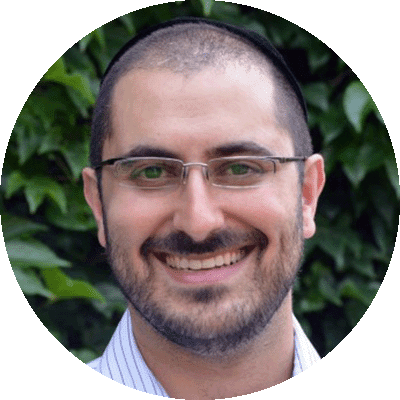

Pre-Mishnah: The Missing Link
I teach 5th grade Judaics at Fuchs Mizrachi School, a Modern Orthodox Zionist school (Cleveland). Upon entering the world of Torah SheBe’al Peh, a student is first greeted by the Mishnah—a complex and sophisticatedly interwoven compendium of Jewish law and wisdom. Students struggle to understand its relevance, how and why it was created, and its importance to the scope of their Torah learning. They ask, “Why are we learning Oral Torah?” and “Why should I care?” but underlying those questions is the more fundamental, “What is the Oral Torah?” While some choose to address this piecemeal over the span of many years, I believe that it is important to address it up front, in an organized manner.


Anatomy of a Gemara Lesson
You have been there, too, right? You thoroughly prepared a Gemara lesson by formalizing how you will explain the shakla vetarya, you concocted attention-grabbing examples and cases, charts to organize the conflicting opinions, and provided a translation and question practice worksheet. You slowly read the Gemara aloud while students annotated the text or completed linear translation sheets. You patiently and clearly explained the concepts and reasoning on a first, second, and even third pass of the reading.
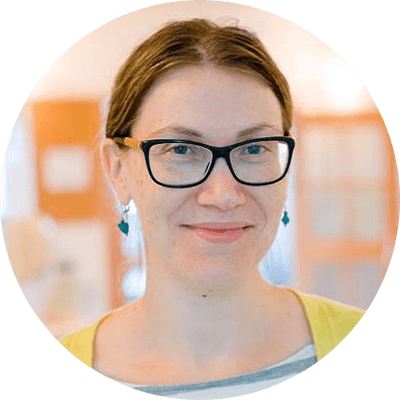

Making the Case for Agada
The rabbis of the Talmud were intentional and thoughtful educators; an example of their consummate pedagogic skill is the way they interspersed narratives into their halakhic writings and teachings. Their use of agadot is an effective teaching tool because, simply put, people love stories. We evolved to tell stories, to become compelled by stories, to connect to the characters, drama, and tension in stories. Stories draw in our students and they have the power to make them care.


Tokhehah Leshem Shamayim
One day, in a 7th grade lesson during our unit on tokhehah (the mitzvah of rebuke), a student shouted out from across the classroom: “This is tokhehah leshem shamayim!” In this moment, with one eloquent and original phrase, this 7thgrader had connected the learning in our current unit of tokhehah with the concept of leshem shamayim (for the sake of heaven) from our previous unit of mahloket (disagreement). This delighted us because it showed that the concepts of mahloket we had been teaching were not just retained for the duration of our unit, or for a test, but were concepts students internalized, held on to, and could apply to new settings and used in unique ways.
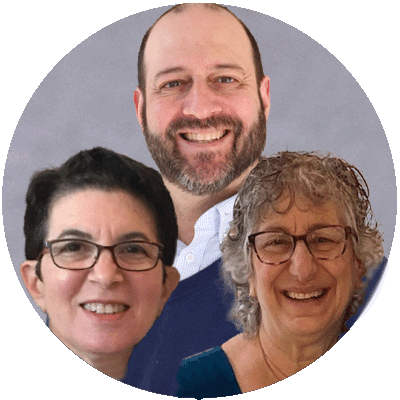

Extending the Reach of Rabbinics
Morah M.’s 5th-grade class is curating a museum exhibit showcasing artifacts that represent family legacy and tradition. The items are described on a placard that explains: These candlesticks were my Bubby’s and now my mother and I use them for Shabbat. When I chose them, I thought of the story about R. Yehuda HaNasi that we learned (Ketubot 103a). Before he died, he told his family that they should continue to set the table the same way, keeping the lamp in its usual place. We’re sort of doing the same thing when we use Bubby’s candlesticks.


Teaching Talmud Guided by Essential Questions
Standing at the edge of the sea can be an awe-filled experience—the incomprehensibly vast expanse of water with no end in sight is both inspiring and intimidating. We would not consider entering it, whether to swim, sail, surf, cruise, or dive without proper preparation. Similarly, the Sea of Talmud is rich with information, personalities, debates, and much more. It, too, can inspire and intimidate with its vastness and complexity, and we should not expect our students to be able to jump in and navigate it without context and a roadmap. To prepare our students as they embark on their journey into the Oral Torah, we need to define our goals and our strategies for achieving them.
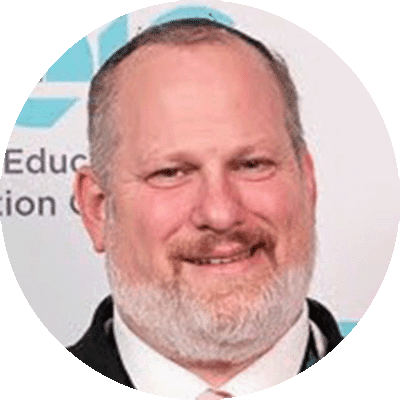

An Alternative Approach for Teaching Talmud
In my first year of teaching, I taught a student whom we will call Yossi. From the time he started 1st grade reading groups, Yossi was placed in the lowest track. This pattern persisted through my 11th grade Gemara class. A few weeks into the first semester of 11th grade, Yossi approached me after class to ask me a burning question which he was embarrassed to ask in front of his peers. He asked, “Who is Rabbi Baraita?” I said, “What do you mean?” He responded, “My past teachers kept explaining ‘the Baraita says…’ Who is Rabbi Baraita and why is he referred to as the Baraita?”


“Wait, What?!” Teaching Jewish Law in a Reform Jewish School
As a teacher at Rodeph Sholom School (RSS), I have for some time considered what it means to teach Torah SheBe’al Peh in a Reform Jewish independent school. What I offer here is a taste of how my colleagues and I have strived to shape our 7th grade Rabbinics unit so that it is aligned with our school’s mission and meets the needs of our specific community of learners. And while every school is unique, I am hopeful that the insights I’ve gained from teaching one unit on the development of Jewish law are instructive for any Jewish day school grappling with teaching Torah SheBe’al Peh.


A Learner-Centered Approach to Teaching Gemara
Traditional methods of teaching Gemara, such as hevruta learning followed by an interactive shiur, have stood the test of time. When teaching beginner students, however, this approach is less common, given their lack of prior knowledge or skills. As a result, many teachers prefer a frontal approach, perhaps projecting the daf on the SMART board and presenting the text phrase-by-phrase while students take notes between the lines of the traditional Vilna text. If hevruta time is used, it is often for the students to review material rather than for them to try to decipher the text. In this article, we are going to propose a method for using a modified version of the traditional approach which can be used for learners starting out on their Gemara learning careers.


Why Learn Talmud?
Some of the articles in this issue describe the joy of studying Talmud, others break down the complex processes to make it more accessible to students or to enable the students to engage with it meaningfully. And just to make sure that we covered the bases of both the how and the why of Talmud study, we asked our authors to weigh in separately on the question: “Why do you think that day school students should be learning Gemara/Rabbinics?” We invite you to join that discussion.
Fall 2023 Journal Credits
JEWISHEDUCATIONALEADERSHIP
Jewish Educational Leadership is a publication of The Lookstein Center for Jewish Education of Bar Ilan University.
Chana German, Executive Director
JOURNAL STAFF
Hyim Brandes | Editor
Zvi Grumet | Editor-in-Chief
Chevi Rubin | Editor
Shani Sicherman | Copyeditor
Please send correspondence regarding journal content to zvi@lookstein.org.
The Lookstein Center publications present a variety of viewpoints. The views expressed or implied in this publication are not necessarily those of the Center.
EDITORIAL OFFICES AND ADVERTISING
The Lookstein Center for Jewish Education
Bar-Ilan University
Ramat Gan 5290002 Israel
Tel: +972-3-531-8199
US: +1-646-568-9737
www.lookstein.org
© 2023 by The Lookstein Center for Jewish Education.
All rights reserved.





